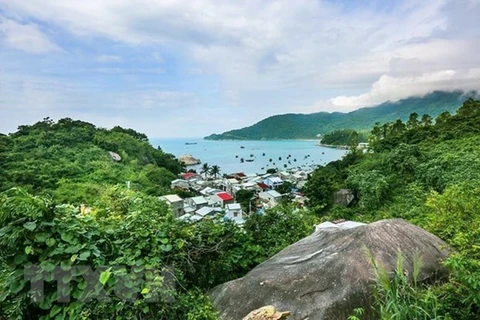Kien Giang (VNA) - The Mekong Delta province of Kien Giang is planning to develop eco-tourism in the U Minh Thuong National Park into an important service sector through making the most appropriate use of the forest’s potential.
Local authorities have been exerting every effort to improve the quality of and diversify tourism activities in the park.
Nguyen Hoang Chia, Director of the eco-tourism and environment education centre at the park, said a series of measures have been adopted to improve the quality of eco-tourism, environmental education, and scientific study tours to the park.
One of the two most important peatland areas in Vietnam, U Minh Thuong National Park boasts unique and rare features that are hard to find elsewhere in the country or the world.
Located about 65km southwest of the provincial capital city of Rach Gia, it forms part of the Kien Giang Biosphere Reserve.
Founded in 2002, the park is surrounded by a 60km-long embankment and covers 21,122 ha in U Minh Thuong district, including 8,053 ha in the core zone and 13,069 ha in the buffer zone.
The park is in the core area of the Kien Giang Biosphere Reserve, which was designated as part of the World Network of Biosphere Reserves by UNESCO in 2006. Among forest ecosystems on acid sulphate soil in the Mekong Delta, only U Minh Thuong has the characteristics of a purely primeval forest.
A survey in 1995 revealed that it boasts more than 8,000 ha of primeval forest, about 3,000 ha of which dates back some 6,000 years ago.
The park is also one of the two most important peatland areas in Vietnam, with the other being U Minh Ha in the neighbouring province of Ca Mau.
The local cajuput forest ecosystem on peatland holds special importance, as it nurtures hundreds of wild animals, including birds, mammals, reptiles, amphibians, fish, insects, and many aquatic species.
Thirty-two mammal species have been found in the park, including 10 species listed in Vietnam’s Red Book on Endangered Species and the International Union for Conservation of Nature (IUCN) Red List, such as the hairy-nosed otter, fishing cat, Asian palm civet, Finlayson’s squirrel, and Sunda pangolin. It is also the habitat of 188 bird species, including eight threatened globally, such as the spot-billed pelican, greater adjutant, black-headed Ibis, sociable weaver, grey-headed fish eagle, and black eagle; 54 reptile and amphibian species, including eight in Vietnam’s Red Book, such as the reticulated python, banded krait, and king cobra; together with 34 fish species.
Moreover, it has the richest biodiversity in terms of plants in the Mekong Delta, harbouring more than 254 species.
Seventy-two rare animal and plant species listed in Vietnam’s Red Book (2007) and the IUCN Red List (2012) have been spotted in U Minh Thuong National Park.
Given the park’s natural beauty and rich biodiversity and its function as a national standard sample of an alum-flooded Melaleuca forest ecosystem, the park has favourable conditions for developing eco-tourism services in connection with scientific study tours.
The eco-tourism and environment education centre at the park has also combined environment education activities with tours visiting local communities, offering opportunities for tourists to join the daily activities of local people, thus understanding more about the locality’s cultural identities and customs.
Tours to the park contribute to raising awareness about environmental protection, conserving cultural and historical relic sites, and promoting cultural exchanges.
Its tourism products are expected to help exploit the biodiversity, forest landscapes, and environment found at U Minh Thuong National Park and its buffer zone, towards implementing the tourism development strategy and forestry development planning of Kien Giang province.
The park’s eco-tourism and environment education centre welcomed over 43,200 visitors last year, representing 61.17 percent of the plan./.

























